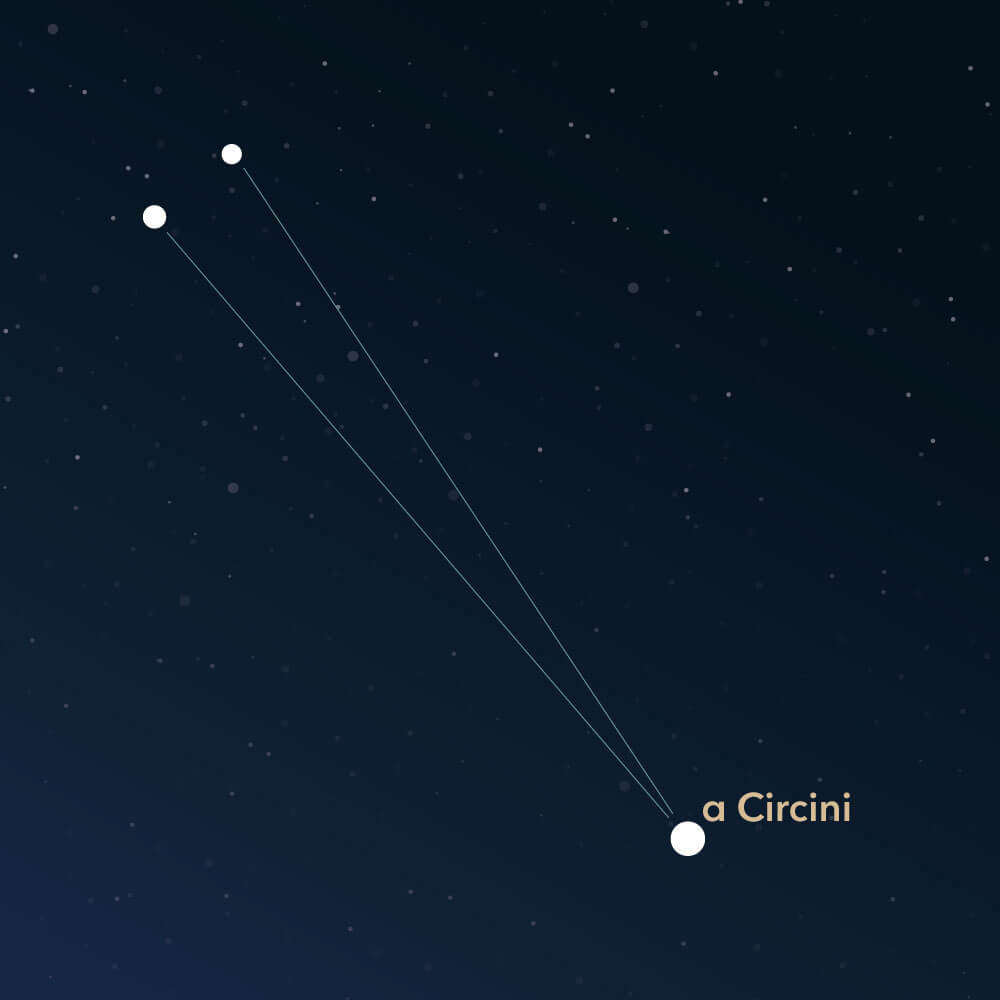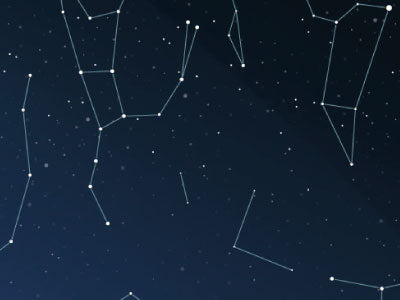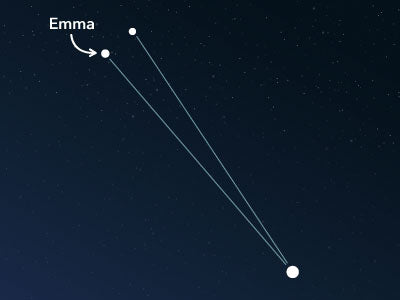The constellation Circinus
Caractéristiques
- Nom latin
- Circinus
- Hémisphère
- Hémisphère sud
- Visibilité
- March - July
- Région
- 93 deg²
- Étoile la plus brillante
- α Circini (HIP number 71908)
- Spécialités
- Galaxy, open star clusters, planetary nebula

The Circinus symbolizes the drafting tool compass to draw circles. It is an inconspicuous and small southern constellation. It was first described by the astronomer Nicolas Louis de Lacaille in the mid-18th century. There are only a few deep-sky objects located in this area.
Hemisphere, visibility, and area
The constellation of Circinus lies in the southern night sky and is visible from the entire southern hemisphere. North of the equator, it can be fully observed up to the 20th parallel. Meaning it is only visible to regions that are more southern than, for example, Tulum in Mexico, the northern part of Thailand, or the southernmost island of Hawaii.
The best time to observe the constellation is from March to July. It appears with an area of about 93 square degrees. Compared to all 88 constellations, Circinus is the fourth smallest constellation.
Circinus is not particularly prominent, as there are no bright stars in the area. The most shining star is α Circini (Alpha Circini), with an apparent magnitude of about 3.2. It lies at a distance of approximately 54 light-years from earth.
To find Circinus in the night sky, it is helpful to orient oneself with surrounding constellations. The Lupus, the Centaurus, the Musca, and the Apus are located in the immediate vicinity of the Circinus. The Triangulum Australe and the Norma are also directly adjacent.
Specialties in the constellation
The Milky Way runs through the area of the Circinus constellation, which is responsible for an interesting galaxy, an open star cluster, and a planetary nebula.
The galaxy is called the Circinus galaxy. It is an active spiral galaxy and is closer to us than any other known galaxy. Its distance to the Milky Way is estimated to be around 13 million light-years. It consists of two rings, with the outer one having a high concentration of gas and the inner one showing dense star formation. Both are concentrated around the center of the galaxy.

History
In the mid-18th century, after the invention of the telescope, the French astronomer Nicolas Louis de Lacaille measured the coordinates of over 10,000 stars from the Cape of Good Hope near Cape Town in South Africa. He realized that not all sky areas are defined precisely, so he subsequently defined some new constellations.
While observing east of the star α Circini, he discovered some faint stars that reminded him of the arrangement of a compass. This prompted him to give the constellation the name Circinus. Circinus is the Latin translation for the "compass," a drawing tool.
It is the smallest of the constellations introduced by de Lacaille.
Constellation Visibility Tool
Los Angeles, USA
34.05°, -118.24°
Constellation Observing Guide
This guide shows when the constellation is visible above the horizon and provides the optimal viewing window when the sky is darkest. Times are displayed in the location's timezone (PDT).
No Optimal Window Found
The constellation's visibility doesn't overlap with the darkest part of the night during the next 48 hours.
Alternative Viewing Options
You can still observe the constellation when it's above the horizon, but there may be some twilight interference. Consider checking again in a few days as visibility patterns change throughout the year.
Constellation Visibility from Your Location
0
Visible Stars
3
Never Rise
0
Always Up
0%
Visible
3 stars are too far south to be visible from your latitude (34.1°N)
Constellation Visibility
When the constellation is above the horizon (includes daylight hours)
Rises
Never Rises
Never Rises
Fully Up
Never Rises
Starts Setting
Never Rises
Never Rises
Fully Set
Never Rises
Never Rises
Above Horizon Times
Includes daylight hours when stars aren't visible to naked eye.
Astronomical Night
When the sky is darkest (sun >18° below horizon)
Dark sky begins
21:18
Jun 5
Dark sky ends
04:38
Jun 6
Darkest Sky Period
Sun more than 18° below horizon. Best for faint objects.
Observing Tips
Lire d'autres articles intéressants

An overview of all 88 constellations
Learn more about all 88 constellations and read interesting information about the mythology, visibility, and features.

Application Planétarium
Découvrez le ciel nocturne avec notre application de planétarium !
Disponible pour iOS et Android.

Nommez une étoile dans la constellation Compass
Name a star in a constellation and create something that lasts for eternity.